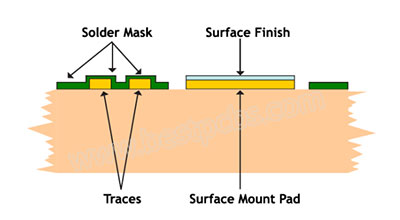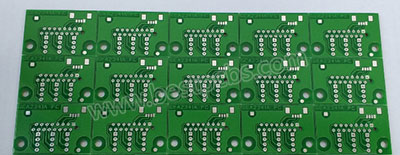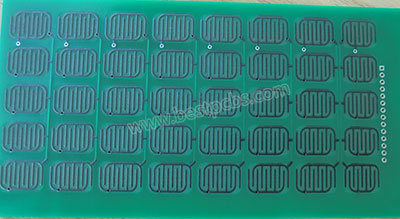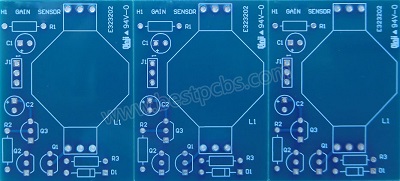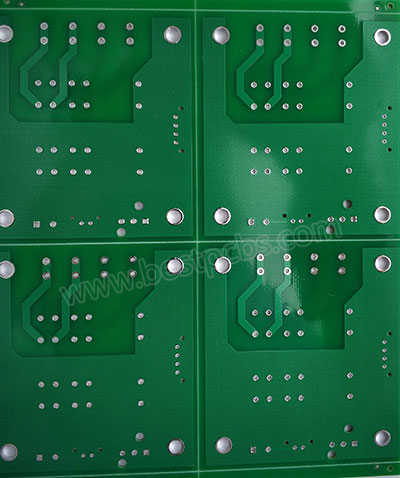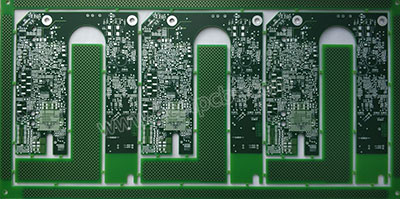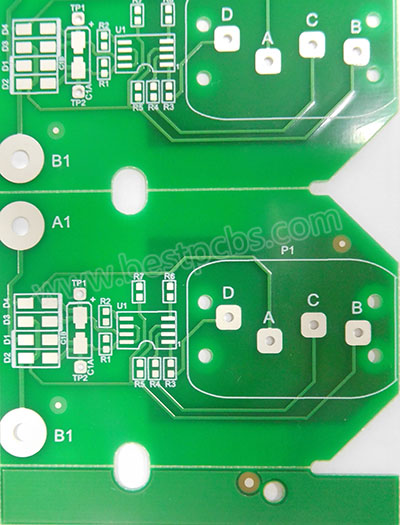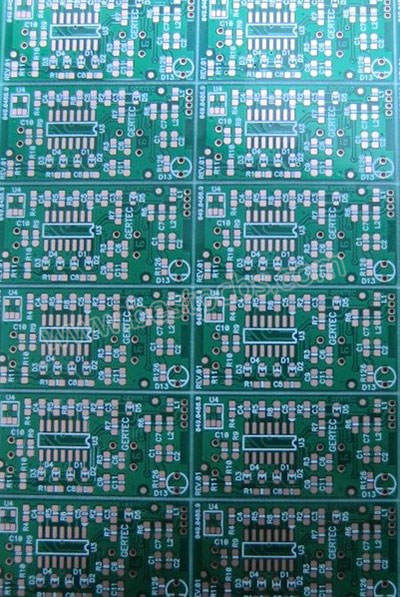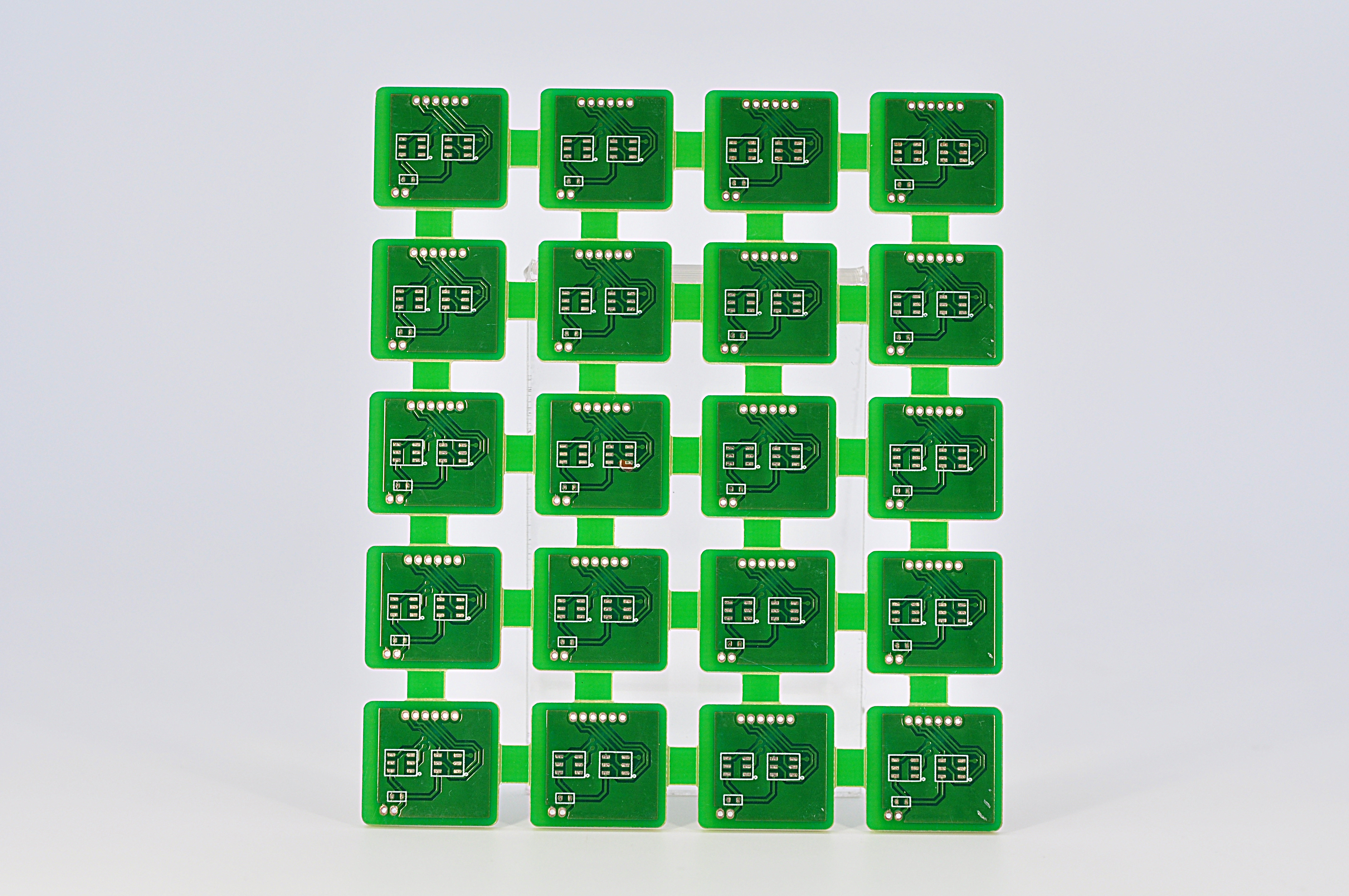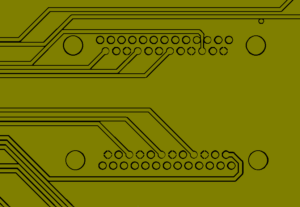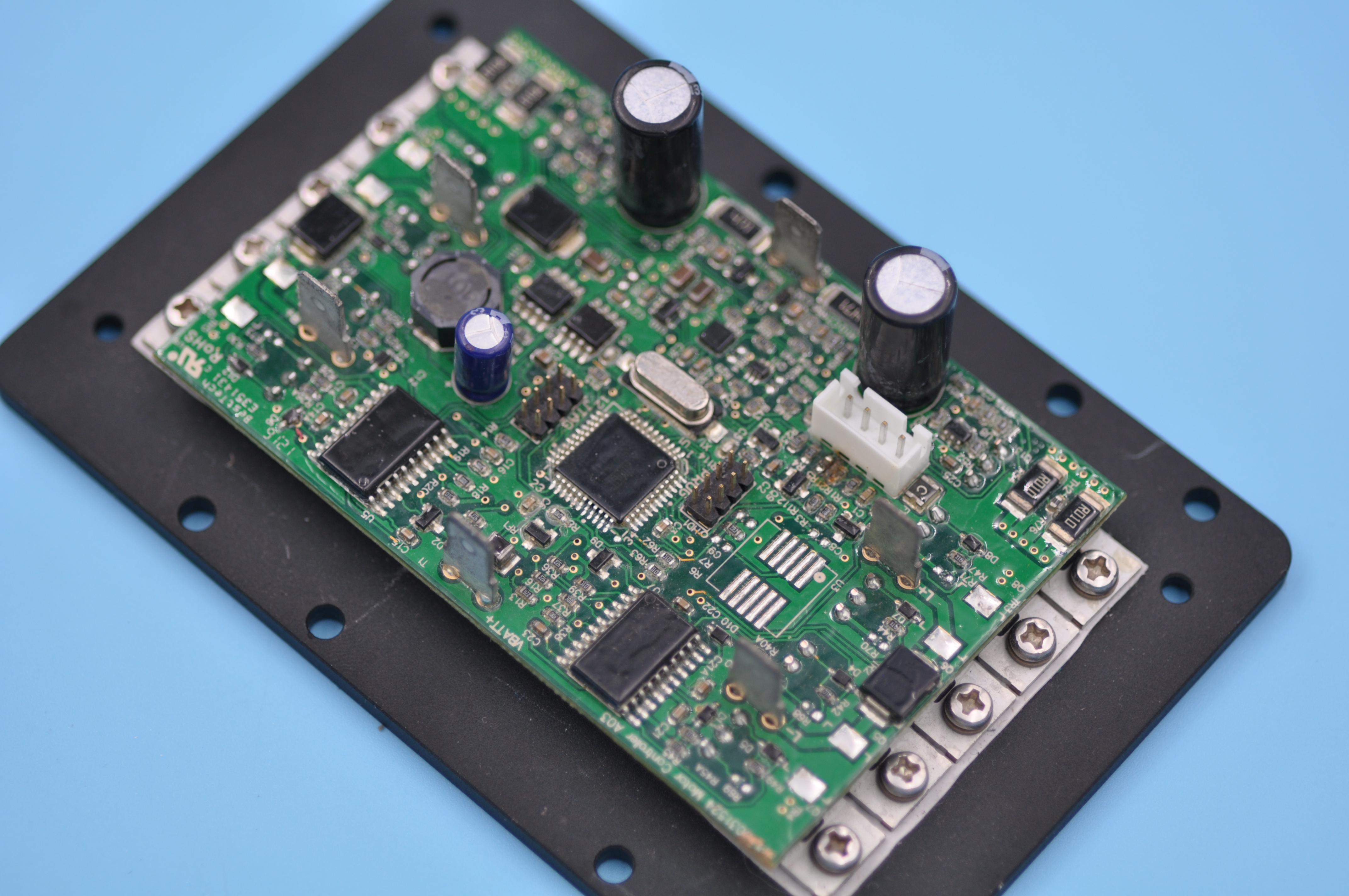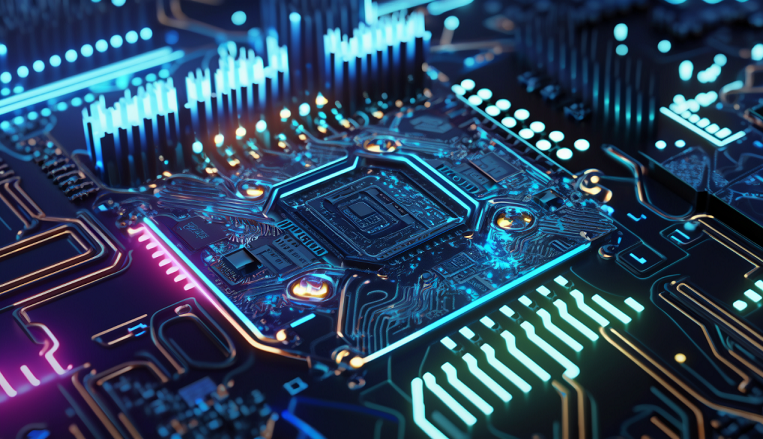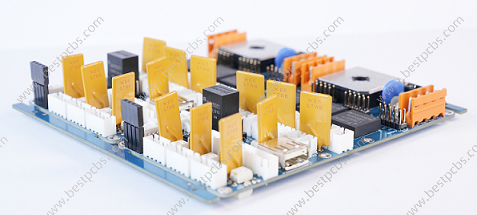Printed Circuit Board surface finish is a coating between bare FR4 board and components. The main function for surface finish is to protect the exposed copper circuitry and provide a solderable surface when assembling(soldering) the components to a copper clad PCB board.
Most of the Rigid Circuit board company can make several different types of surface finish. Best Technology as a leading custom FR4 printed circuit board manufacturer since year 2006, it could provide following different finish.
HASL
Lead-free HASL
Immersion Tin/Immersion Silver
OSP (organic Solderability Preservative)
Gold
ENIG (Electroless Nickel Immersion)
Hard Gold
Wire bonding Gold
As the surface mounts assembly service became more complex and needs to conform to new regulations like RoHS and WEEE. People maybe face the question how to choose a suitable surface finish for your FR4 Copper board?
Before decide to choose suitable surface of copper conductors circuit board, you may need to take the cost, RoHS, your components type, PCB assembly method, factory circuit fabrication capability, and rigid board circuit testability into consideration.
Basis on above information of copper foil PCB, we would like to make a explain PCB finish in detail, wish this may help when you make decision at circuit board design and manufacturing.
HASL/Lead Free HASL
It is a most popular surface finish, and the cost is low and easy to repairable, it is acceptable for simple SMT. But the surface is uneven, it is not suitable for fine pitch components and not good for plated through-hole(PTH). In other way, it is poor wetting.
Material different with same finish
HASL(standard):Typically Tin-Lead
HASL(Lead Free):Typically Tin-copper, Tin-Nickel, without lead
The thickness will conform to IPC 6012 class 2 standard
Advantages of HASL-LF
Excellent solderability
Inexpensive / Low cost
Widely Available and used
Easy reworkable
Allows large processing window
Long industry experience / well known finish
Disadvantages of HASL-LF
Uneven surfaces for printed circuit board
No good for fine pitch components from Samtec/Hirose/Molex
Thermal shock
Solder Bride for circuit board assembly
Plugged or reduced PTH’s
Not suited for < 20mil pitch SMD & BGA
Bridging on fine pitch
Not ideal for HDI products
Immersion Tin
Advantages
Flat surface
No Pb
Good for fine pitch / BGA / smaller components
Mid range cost for lead free finish
Press fit suitable finish
Good solderability after multiple thermal excursions
Easy reworkable
Disadvantages
Very sensitive to handling – gloves must be used
Tin whisker concerns
Aggressive to solder mask – solder mask dam shall be ≥ 5 mil
Not recommended to use peelable masks
Exposed tin on final assembly can corrode
Not good for multiple reflow/assembly process
Difficult to measure thickness
OSP (organic Solderability Preservative)
OSP(organic Solderability Preservative) same with HASL, lower cost but the OSP have flat surface, and it is not good for PTH components, sensitive and short shelf life, it is very easy come to oxidation.
Advantages
Flat surface
No Pb
Good for fine pitch / BGA / smaller components
Inexpensive / Low cost
Easy reworkable
Simple Process
Disadvantages
Not easy to measure thickness
Not good for circuit copper board plated through-hole(PTH)
Short Shelf Life
Maybe cause ICT issue
Exposed Cu on Final assembly
Handling sensitive– gloves must be used and scratches avoided
The above surface finish of Printed Wiring Board compared with Gold finish, the cost is corresponding cheaper, but in my coming blog, I would like mainly to explain Gold finish for printed circuit board fabricator with 13 years rich-experienced in FR4 PCB custom contract manufacturer.
If you have any question about the printed circuit boards (PCBs). Warmly welcome to send mail or call Best Tech.
